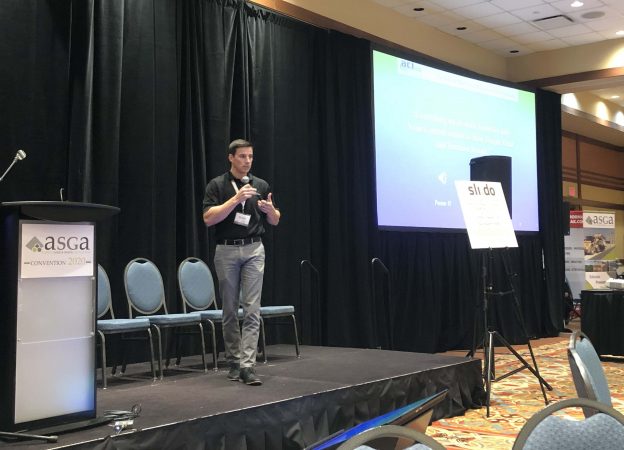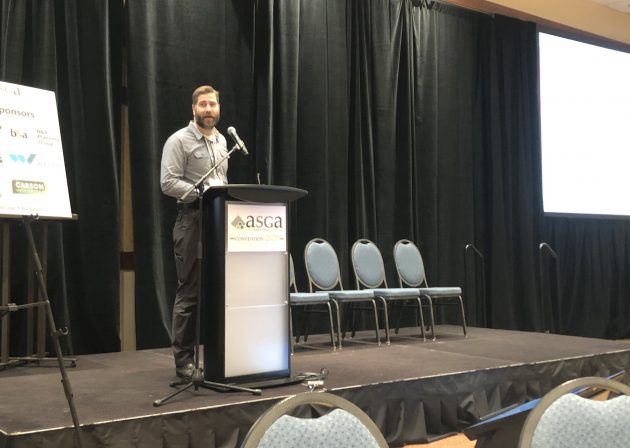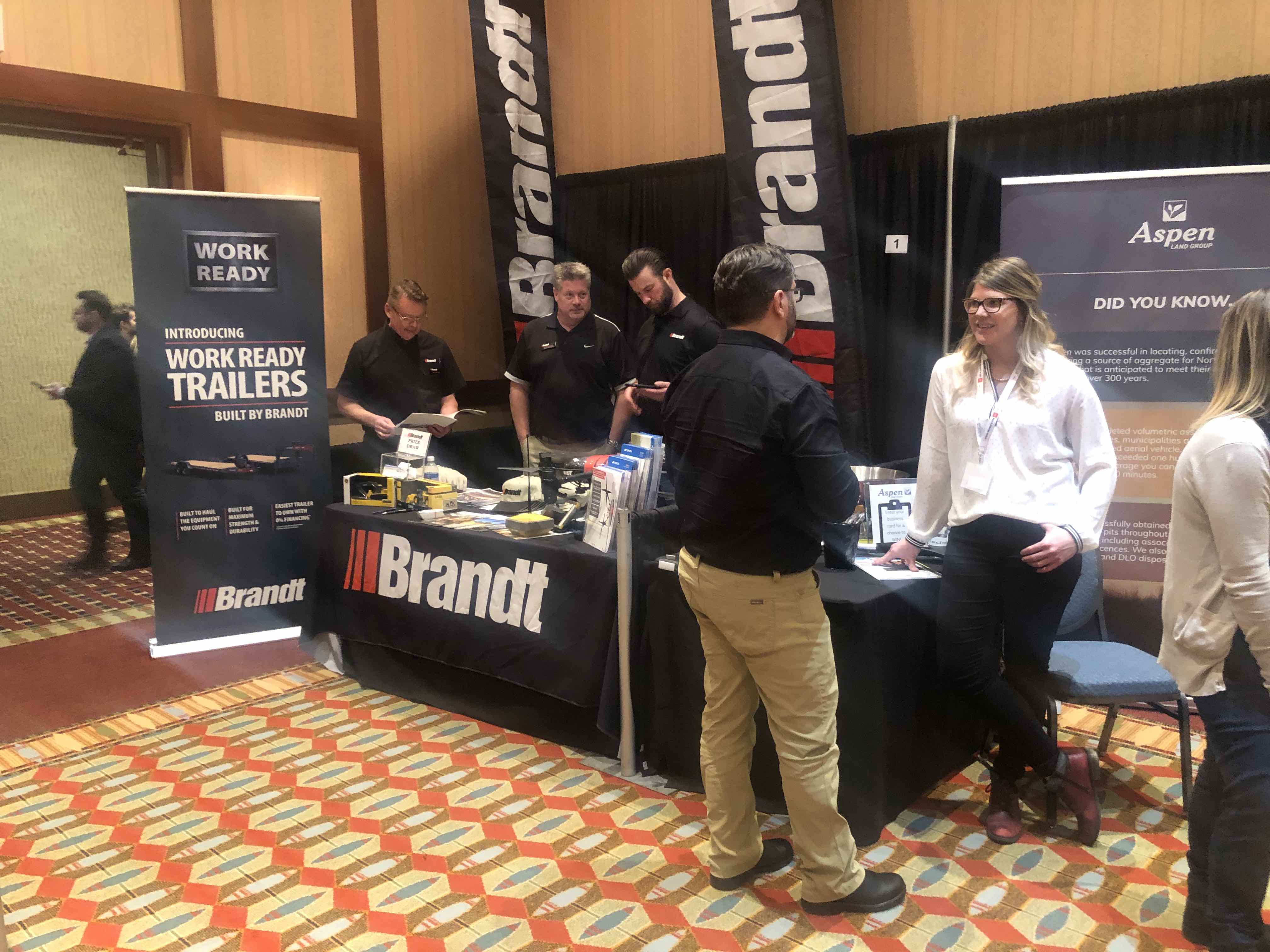
The two-day Alberta Sand and Gravel Association’s (ASGA) 2020 Convention was a big win this year at the River Cree Resort and Casino near Edmonton.
Alberta Environment and Parks kicked off the education portion with Terrina Perley, senior land and water specialist, Elise Neumann, environmental professional, and Shannon Cholach, senior water administration technologist, giving updates on several environmental areas that affect the sand and gravel industry.
The trio covered: better ways to plan five-year reports; soil investigations; clarifications on the Water Act; things commonly missing in applications; tips on navigating EAS OneStop; and more, followed by a question-and-answer period. The three were asked how much time it will take to get reclamation tickets after applications are submitted and how long it will take to get security returned.
“Reclamation certificate applications are currently managed through our compliance assurance division and it [length of application time] may be a combination of how many staff we have,” said Perley. In regards to security being returned she added it should be very quick, 60 days at the most.
Jef McGee from Polydeck followed the Alberta team and he gave a short presentation on screen technologies, the various screens available and how they can best be used by your team. McGee focused on wash, rinse, dredge and dewatering screens.
ACI Acoustical Consultants had Patrick Froment give a talk titled, “Turn Down for What? Noise Mitigation for Gravel Operations.” He explained what sound is, how it travels, what decibels are and what frequency/pitch is.

Patrick Froment from ACI Acoustical Consultants.
Froment shared several effective ways companies can better mitigate noise in areas where residents may become upset if noise is too loud at a construction site.
“The best thing you can do is pre-plan,” he said. “Education and interaction with impacted residents is key–getting the residents on your side as quickly as possible. From my experience it makes things a lot smoother.”
He added that it’s important to use previous experiences when determining how to plan at a new site. “Just because something worked at one site might not work at another site.”
He also said before beginning to get a Noise Impact Assessment (NIA). With an NIA you can determine the impact of topography, identify hotspots and have a better idea where you should place your equipment.
Froment was asked what are some measures an aggregate producer can take to reduce acoustic footprint and he said, “Go back to source. Maintain equipment. Be proactive and assume sound will be an issue and be willing to address it. Strategically place equipment to try to mitigate. But also know that some people still may just not like you being there.”
Scott Holroyd from Kingfisher Aquatics gave a talk on updates to the Federal Fisheries Act and a reminder to all in attendance that, “No person shall kill fish, unless fishing.” The word fish includes and is defined by the act as (a) parts of a fish (b) shellfish, crustaceans, marine animals and (c) egg, sperm, larvae, spawn, spat, and juvenile stages of everything mentioned above.

Scott Holroyd from Kingfisher Aquatics.
Holroyd said there have been three versions of the act in the last decade of the biggest changes occurred in 2012 and 2019. The changes updated in 2019 were:
– The Fisheries Act once again applies to all fisheries.
– “Harmful Alteration, Disruption, or Destruction” replaced the term “Serious Harm”.
– Introduction of Codes and Practices.
– DFO (Department of Fisheries and Oceans) involvement is required on all projects not covered in the Codes of Practices.
Holroyd spoke on the three most commonly applicable prohibitions for industry in Alberta. They are:
- Don’t kill fish
- Don’t release deleterious solutions
- No harm alteration, disruption or destruction of fish habitat.
He also spoke on how all this applies to the sand and gravel industry.
“No person shall carry on work, undertaking or activity, other than fishing, the results in the death of a fish,” he said. “Remember that the Fisheries Act applies to all fish, anywhere a fish might be and if fish are in your pits, you are responsible for their well-being and ensuring that they do not remain trapped.”
One of Holroyd’s biggest take aways from the session was not to let fish get into your pit. “Onus is on the operator to make sure they are no fish in your pits,” he said. “Prevention is the best medicine in this case.”
Inland Aggregates received the third annual 2020 ASGA Award of Excellence at the conference for hosting their charity event “West Country Hearth Attack”. John Ashton, executive director of ASGA said the award is given to a gravel producer who exemplifies outstanding leadership and is involved with their community and the award was presented to Kent Majeau.
Inland Aggregates website says the West Country Hearth Attack is a fun way of rallying families in support of their community. The event pushes its participants to navigate obstacles to reach a finish line, but ultimately, it’s what the event supports that makes it so meaningful. Community members from Villeneuve participate in this race to raise funds for the West Sturgeon People Aging in Place Foundation. The Foundation is a non-profit that owns and operates West Country Hearth, an assisted living senior’s complex in Villeneuve.
“The 2019 race was 7.1 kilometres long, had 20 obstacles, included 289 racers and raised $43,000,” said Majeau.
ASGA held their convention Jan 8-9, 2020, and covered even more topics such as introducing the Aggregate Producers Association of Canada; an update on the ARCHA; Alberta Environment and Parks ministry update, salary replacements at WCB; several other association updates; and more. There was also a trade show with booths and vendors set up to show attendees their latest tech, products and services.
Print this page
